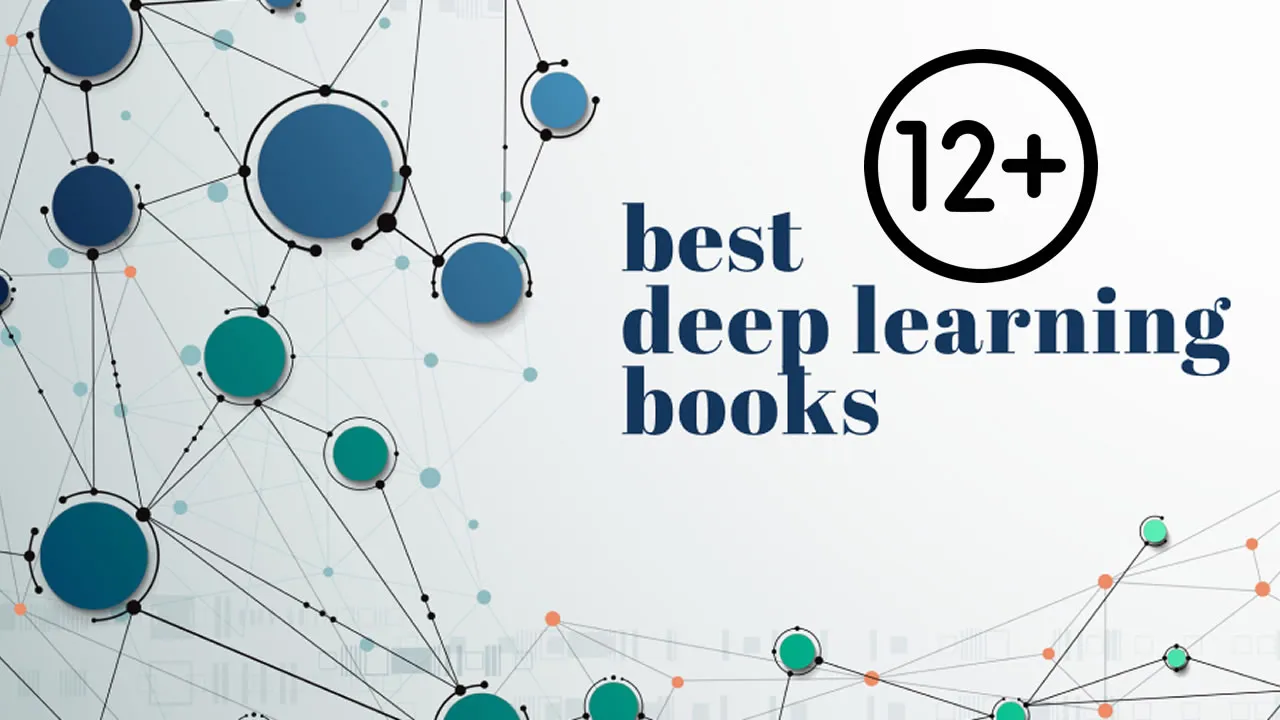12+ Best Deep Learning Books for Beginners and Experts
Learn deep learning with the best 12+ books for beginners and experts. This comprehensive guide covers a wide range of topics, from the fundamentals of neural networks to advanced deep learning techniques. With the right book, you can master deep learning and build powerful AI applications.
1. Deep Learning for Coders with Fastai and PyTorch
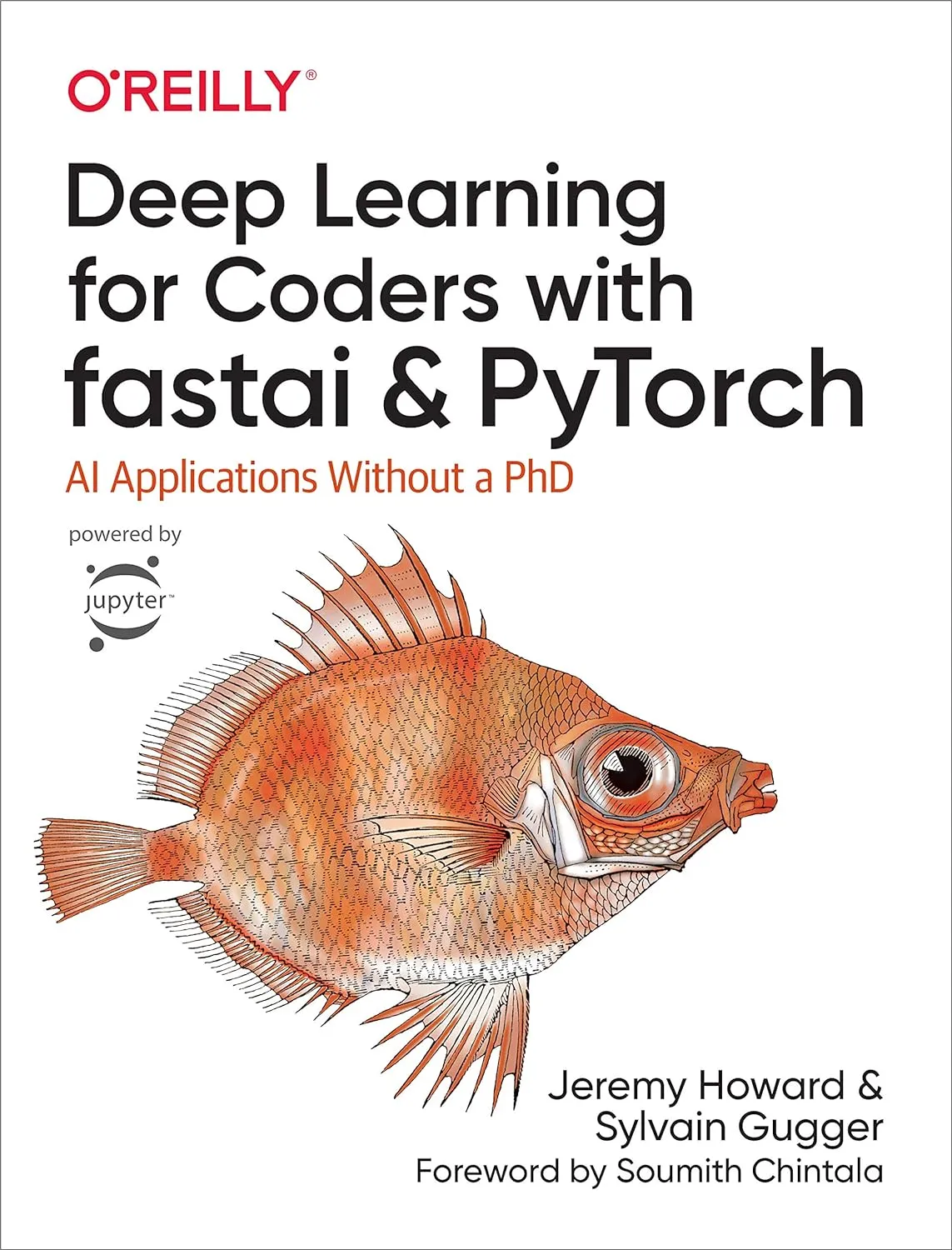
| Key Information | |||
| Authors: Jeremy Howard, Sylvain Gugger | Publisher: O’Reilly Media | ||
| Pages: 621 | Edition: First | ||
| Publish Date: August 2020 | Level: Beginners | ||
| Rating: 4.8/5 | Formats: Paperback, Kindle | ||
| Who is it for? Beginners who are familiar with Python | |||
Why we chose this book
Our findings show that this book is part of the efforts of the fastai research group to make Deep Learning more accessible. It’s authored by Jeremy Howard and Sylvain Gugger, who have both worked as core members of the fastai research team.
In this book, the authors provide a hands-on guide for developers ready to kick-start a career in Deep Learning. You will learn how to train a model using fastai and PyTorch. Some of the topics covered in this book are data ethics, collaborative filtering, tabular modeling, convolutional neural networks (CNNs), and more.
The authors include a practical session where readers are guided through a Deep Learning project (Notebook app) from model to production. One thing that makes this one of the best books on Deep Learning is that it comes with a complementary course that readers can take for free.
Features
- Requires familiarity with Python
- Authored by creators of the fastai library
- Foreword by PyTorch cofounder Soumith Chintala
- Has complementary course
2. Deep Learning with Python
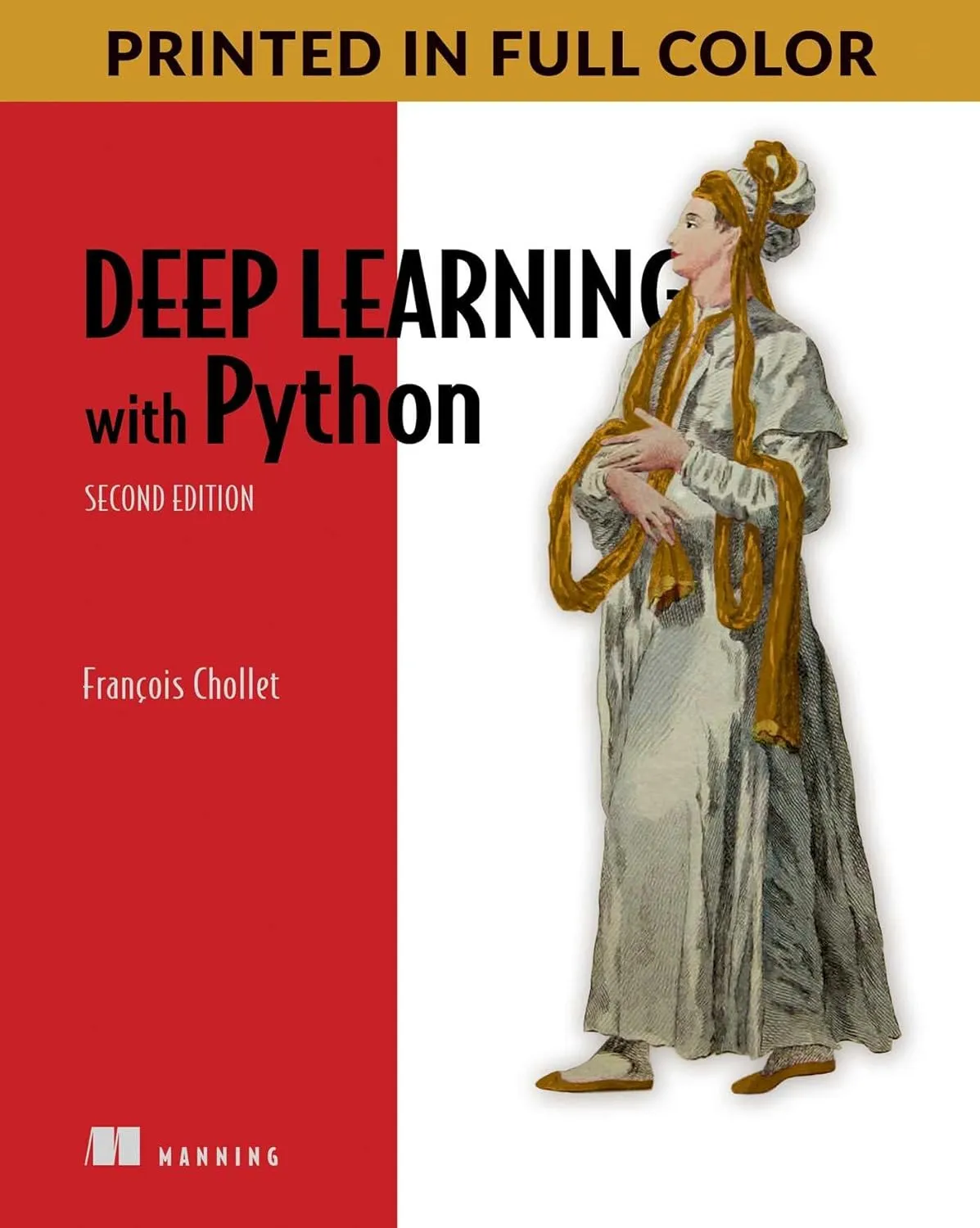
| Key Information | |||
| Author: François Chollet | Publisher: Manning | ||
| Pages: 504 | Edition: Second | ||
| Publish Date: December 2021 | Level: Intermediate | ||
| Rating: 4.7/5 | Formats: Paperback, Kindle, Audible Audiobook | ||
| Who is it for? For readers with intermediate Python skills | |||
Why we chose this book
Ranked #1 in the Computer Programming Languages category on Amazon, our research indicates that this book is ideal for learning how to implement neural networks using TensorFlow and the Keras library. Although you will need intermediate Python skills.
The author begins with AI and machine learning lessons and then provides a deep dive into applying Deep Learning concepts for computer vision, time series, text generation, and more. Toward the end of the book, the author discusses the limitations of Deep Learning and the future of Deep Learning.
François Chollet, the author, is an AI researcher and currently works as a Senior Staff Engineer at Google. He is also the creator of the Keras deep-learning library.
Features
- Comprehensive Guide to Teras and Keras Library
- Ranked #1 in Computer Programming Languages
- Requires intermediate knowledge of Python
- Authored by the creator of Keras Library
3. Deep Learning: A Visual Approach
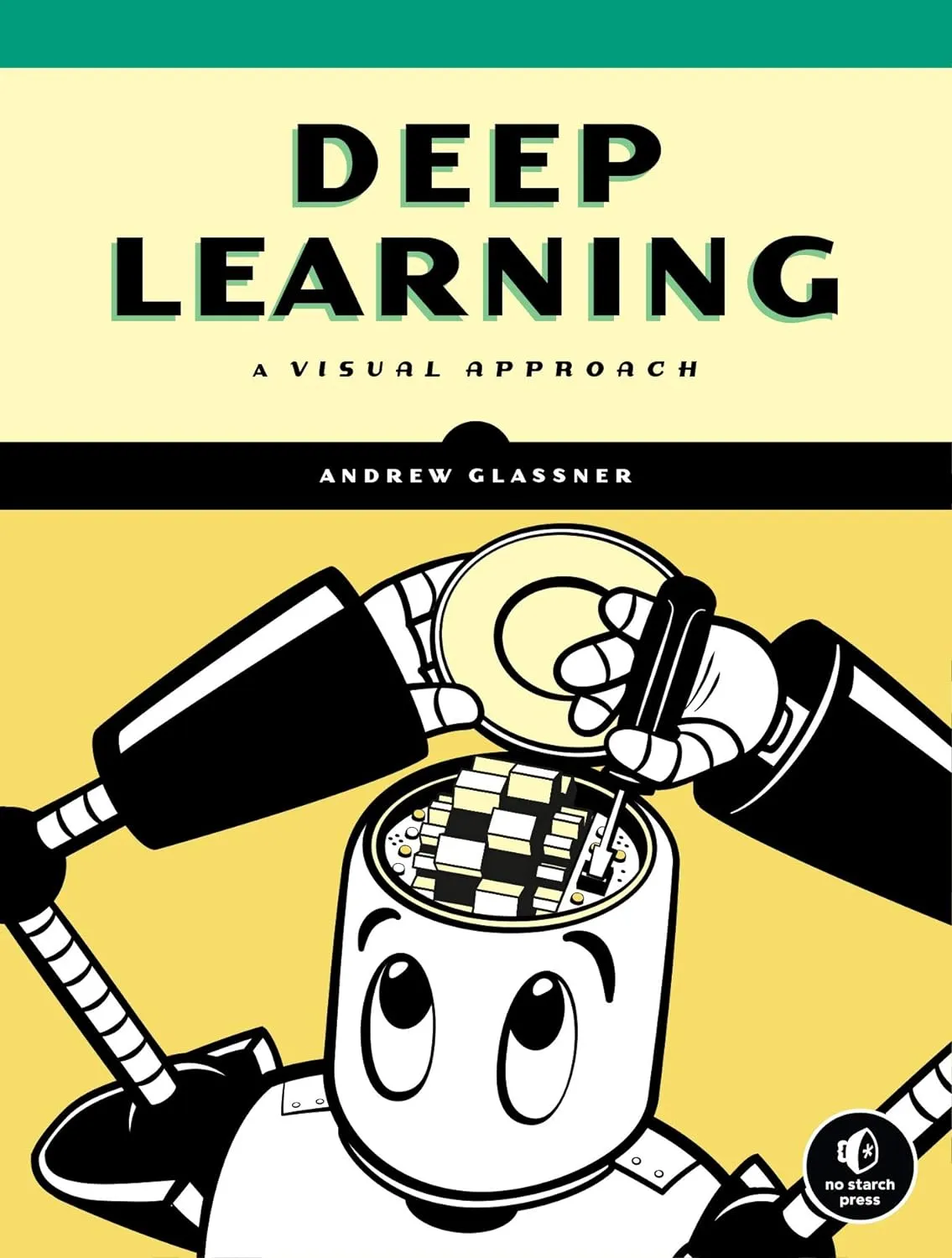
| Key Information | |||
| Author: Andrew Glassner | Publisher: No Starch Press | ||
| Pages: 776 | Edition: Illustrated | ||
| Publish Date: June 2021 | Level: Beginner | ||
| Rating: 4.7/5 | Formats: Paperback, Kindle | ||
| Who is it for? Beginners, including those without a technical background | |||
Why we chose this book
This is the ideal Deep Learning book for beginners, including those without a programming background. It’s also language and library-agnostic.
The author covers various Deep Learning topics with clear explanations and real-world examples, including many full-color illustrations and images. This includes an overview of classification, training and testing, overfitting and underfitting, data preparation, ensembles, and more.
You’ll also cover Deep Learning topics like neural networks, backpropagation, and optimizers. Importantly, this book is not written purely for developers or those with a technical background, as it’s also for managers, scientists, and anyone curious about Deep Learning.
Features
- Has no prerequisites
- Includes lots of images and illustrations
- Clear explanations and real-world examples
- Not language or library dependent
📚 12 Best Data Science Books for Beginners and Advanced Practitioners
4. Learning Deep Learning
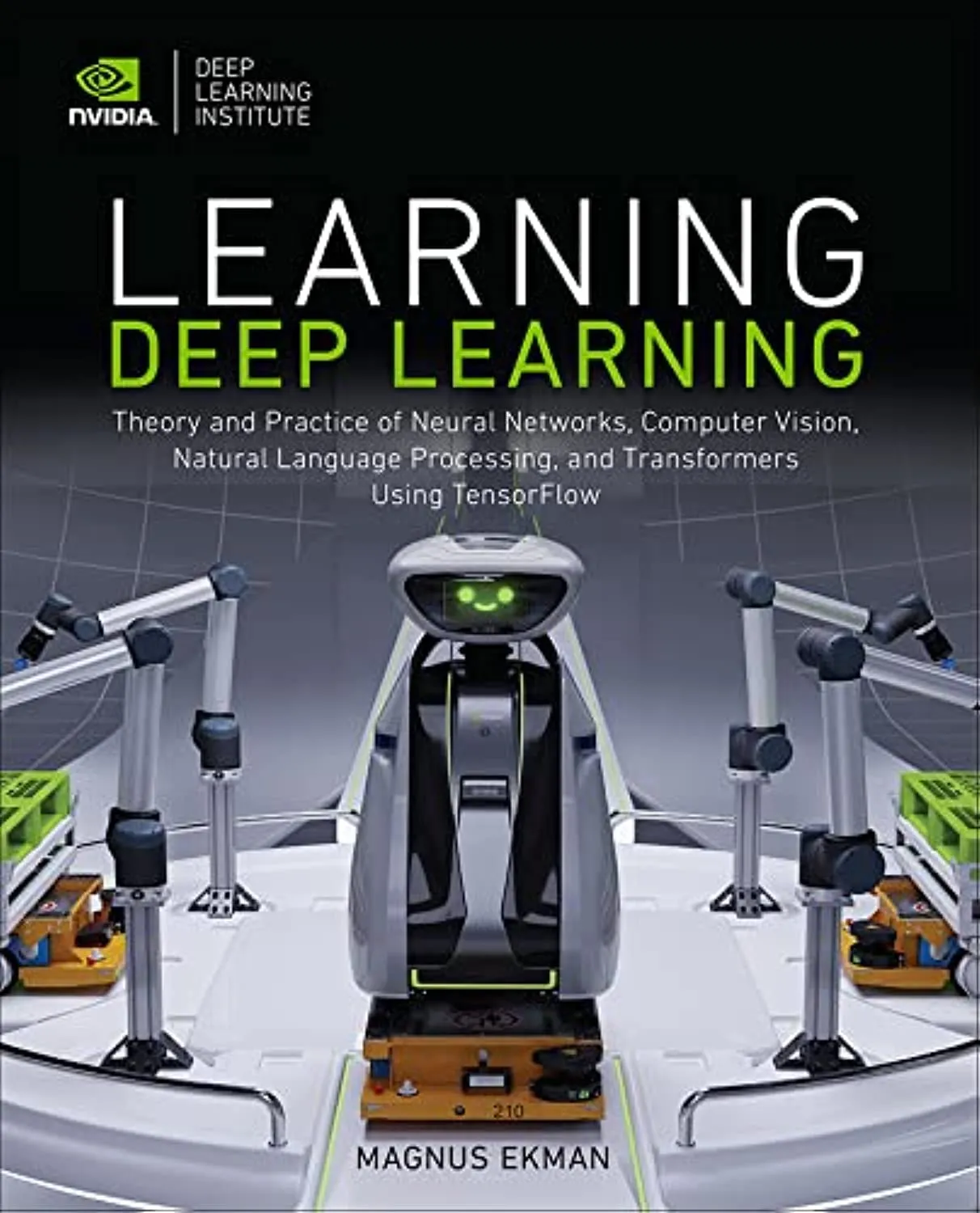
| Key Information | |||
| Author: Magnus Ekman | Publisher: Addison-Wesley Professional | ||
| Pages: 752 | Edition: First | ||
| Publish Date: August 2021 | Level: Beginner | ||
| Rating: 4.7/5 | Formats: Paperback, Kindle | ||
| Who is it for? Beginners in the field of Deep Learning | |||
Why we chose this book
The book is an ideal introduction to Deep Learning for beginners in the field. The author begins with an in-depth explanation of what Deep Learning is and a brief history of deep neural networks (DNNs).
Topics covered in this book include the Rosenblatt perceptron (the first generation of neural networks), gradient-based learning, convolutional neural networks (CNNs), recurrent neural networks (RNN), neural language models, and natural language translation.
Our findings revealed that the author uses TensorFlow with Keras for the code examples in the book. However, he has also made available corresponding PyTorch examples online. This is a great way to make the book suitable for those who prefer TensorFlow and those who prefer PyTorch library.
Features
- Code examples for TensorFlow and PyTorch
- Includes a historical overview of DNNs
- Ideal for beginners
5. Practical Deep Learning
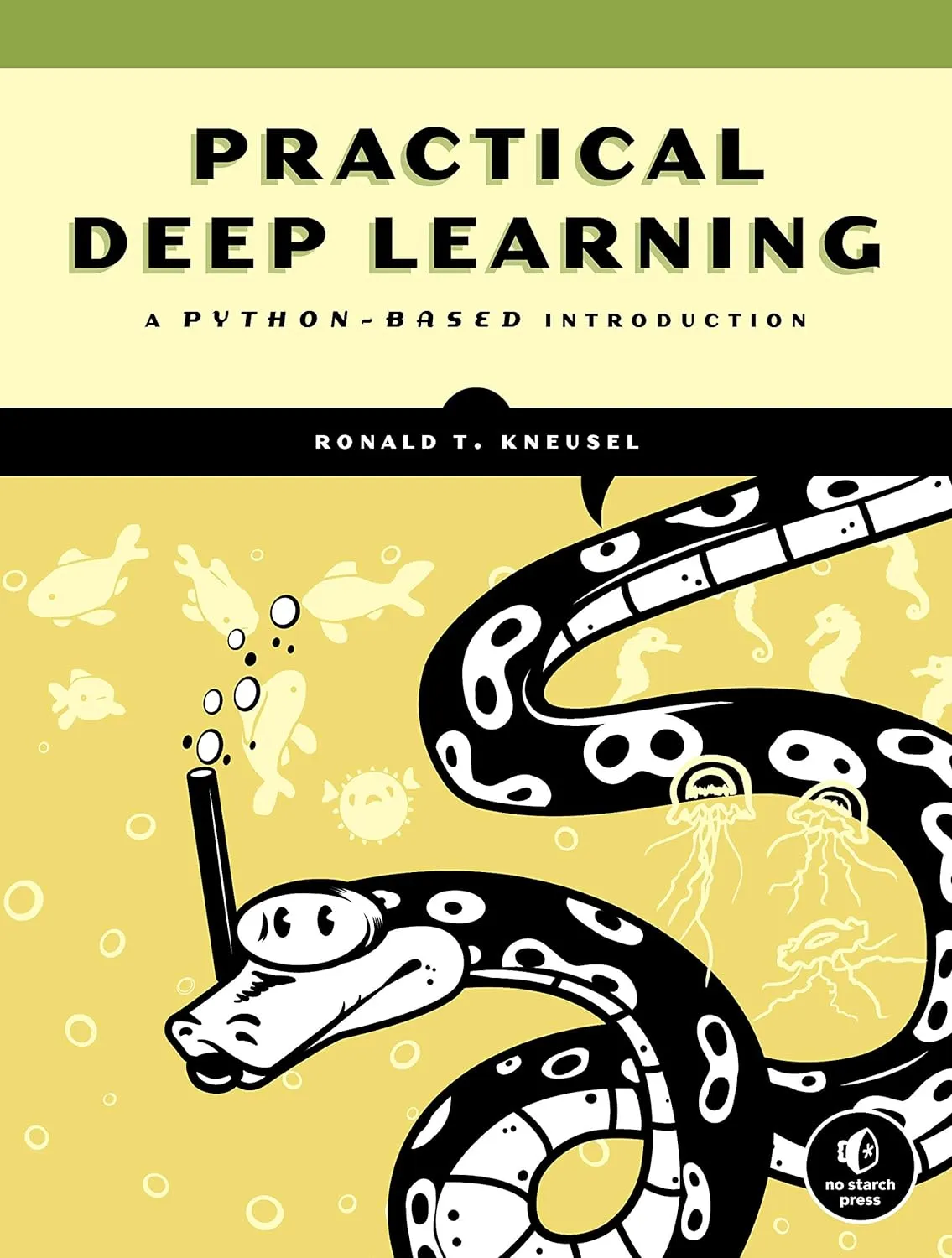
| Key Information | |||
| Author: Ronald T. Kneusel | Publisher: No Starch Press | ||
| Pages: 464 | Edition: First | ||
| Publish Date: a | Level: Beginner | ||
| Rating: 4.7/5 | Formats: Paperback, Kindle, Spiral-bound | ||
| Who is it for? Beginners | |||
Why we chose this book
The author begins by discussing fundamental concepts like vectors, matrices, and probability. No worries if you’re unfamiliar with Python, as there’s a chapter dedicated to introductory lessons in Python and another on NumPy.
Based on our observations, you can expect to learn about neural networks, convolutional neural networks (CNN), evaluating model performance, and how to use the Scikit-learn and Keras libraries.
The book also includes a project that requires readers to build a model for classifying audio samples, helping them to get hands-on experience with the topics covered in the book.
Features
- Includes lessons on Python basics
- Learn how to use the NumPy package
- Includes a final case study
- Build a model for classifying audio samples
📙 9 Best TensorFlow Books for Beginners and Experienced Developers
6. Deep Learning with TensorFlow and Keras

| Key Information | |||
| Authors: Amita Kapoor, Antonio Gulli, Sujit Pal | Publisher: Packt Publishing | ||
| Pages: 698 | Edition: Third | ||
| Publish Date: October 2022 | Level: Beginner | ||
| Rating: 4.8/5 | Formats: Paperback, Kindle | ||
| Who is it for? Python Developers, Data Scientists | |||
Why we chose this book
In this book, you will learn how to build Deep Learning systems using TensorFlow and Keras. The authors start with a chapter on Neural Network foundations with TensorFlow and they’ve also included a chapter dedicated to the math behind Deep Learning, which is surprisingly easy to follow even if you have little math background.
Other topics the authors cover in-depth in this book are unsupervised learning, self-supervised learning, generative models, reinforcement learning, and Deep Learning best practices. They also include many references for readers who are interested in doing a deep dive into some of the topics.
During our research, we also discovered a dedicated Discord community for the book. Readers are invited to join the community and learn alongside other readers. This is a great way to bounce ideas off others learning the same thing as you.
Features
- Has lots of examples for practice
- Has a dedicated Discord community
- Includes a chapter on Math behind DL
- Includes lots of references for a deep dive
7. Deep Learning

| Key Information | |||
| Author: John Kelleher | Publisher: The MIT Press | ||
| Pages: 296 | Edition: Illustrated Edition | ||
| Publish Date: September 2019 | Level: Beginner | ||
| Rating: 4.5/5 | Formats: Paperback, Kindle, Audible Audiobook, CD | ||
| Who is it for? Beginners looking for a concise introduction to Deep Learning | |||
Why we chose this book
Our findings revealed that the author John Kelleher is the Academic leader of the Information, Communication, and Entertainment research institute at the Technological University Dublin.
In this book, you will learn the history of some of the major breakthroughs in Deep Learning. You will also learn about Deep Learning architectures like generative adversarial networks (GANs), long short-term networks, recurrent neural networks (RNNs), autoencoders, capsule networks, and more.
If you are getting started with Deep learning and are looking for concise yet clear explanations of various Deep Learning concepts, this book will be an ideal option for you.
Features
- Ranked #2 best seller in Genetic Algorithm
- Concise yet clear explanations
- Great choice for beginners
8. Generative Deep Learning
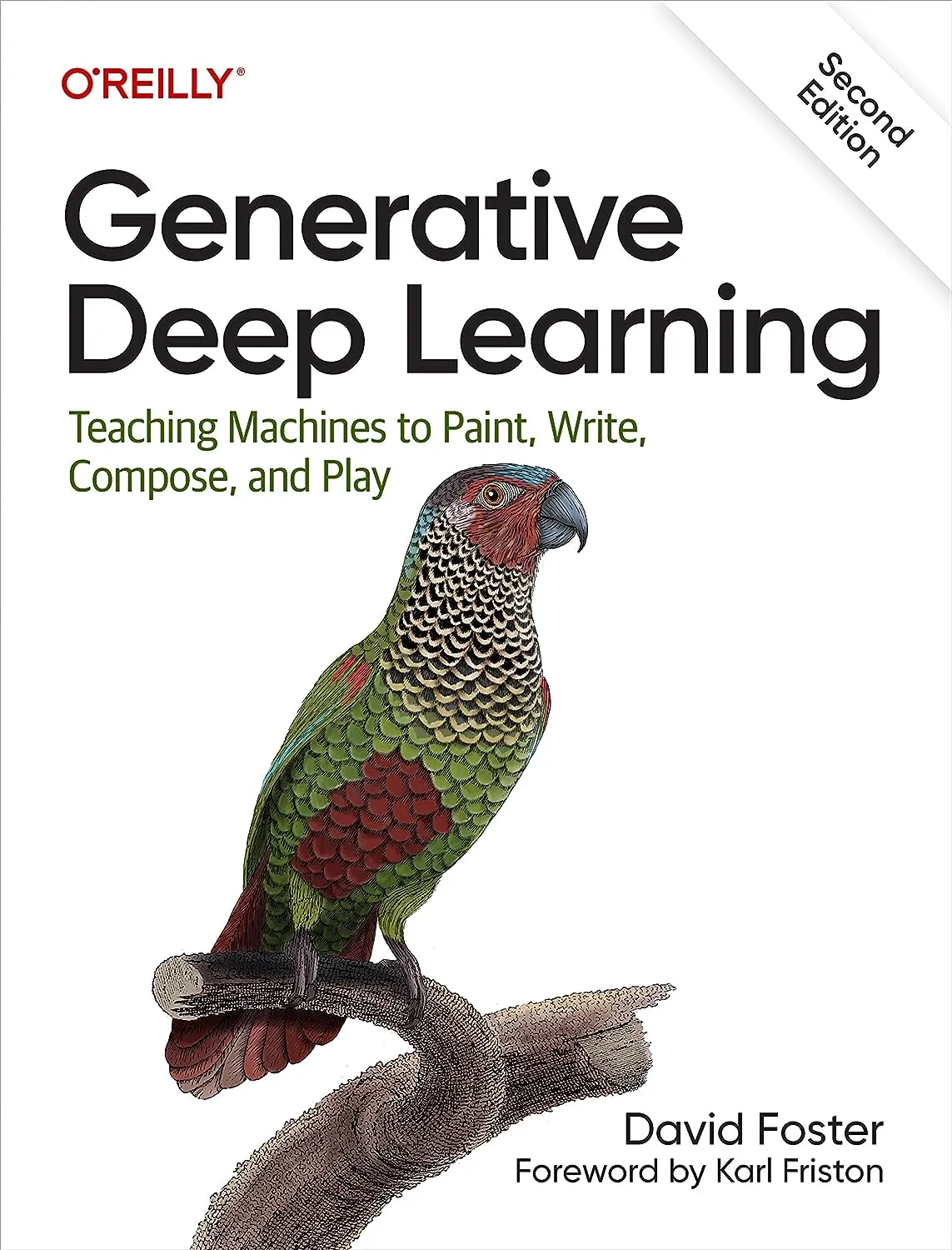
| Key Information | |||
| Author: David Foster | Publisher: O’Reilly Media | ||
| Pages: 453 | Edition: Second | ||
| Publish Date: June 2023 | Level: Beginners | ||
| Rating: 5.0/5 | Formats: Paperback, Kindle | ||
| Who is it for? Beginners, Creatives interested in Deep Learning | |||
Why we chose this book
David Foster begins his book by introducing the fundamental concepts and techniques of Deep Learning. He then delves into the exciting realm of generative Deep Learning. This covers topics like generative adversarial networks (GANs), variational autoencoders (VAEs), and recurrent neural networks (RNNs).
Based on our observations, one of the strengths of this book is its emphasis on practical applications. The author’s clear explanations and code examples using TensorFlow and Keras make it easy to understand the concepts and implement them in your own projects.
You will learn how to apply generative Deep Learning techniques to various domains like image generation, text generation, music composition, and even game development.
The author also highlights the artistic and creative aspects of generative Deep Learning. He also explores the ethical considerations surrounding AI-generated content. And provides insights into the future of machine creativity.
Features
- #1 new release in Machine Theory
- Hands-on approach to learning
- Explore the ethics of AI-generated content
9. Deep Learning Illustrated
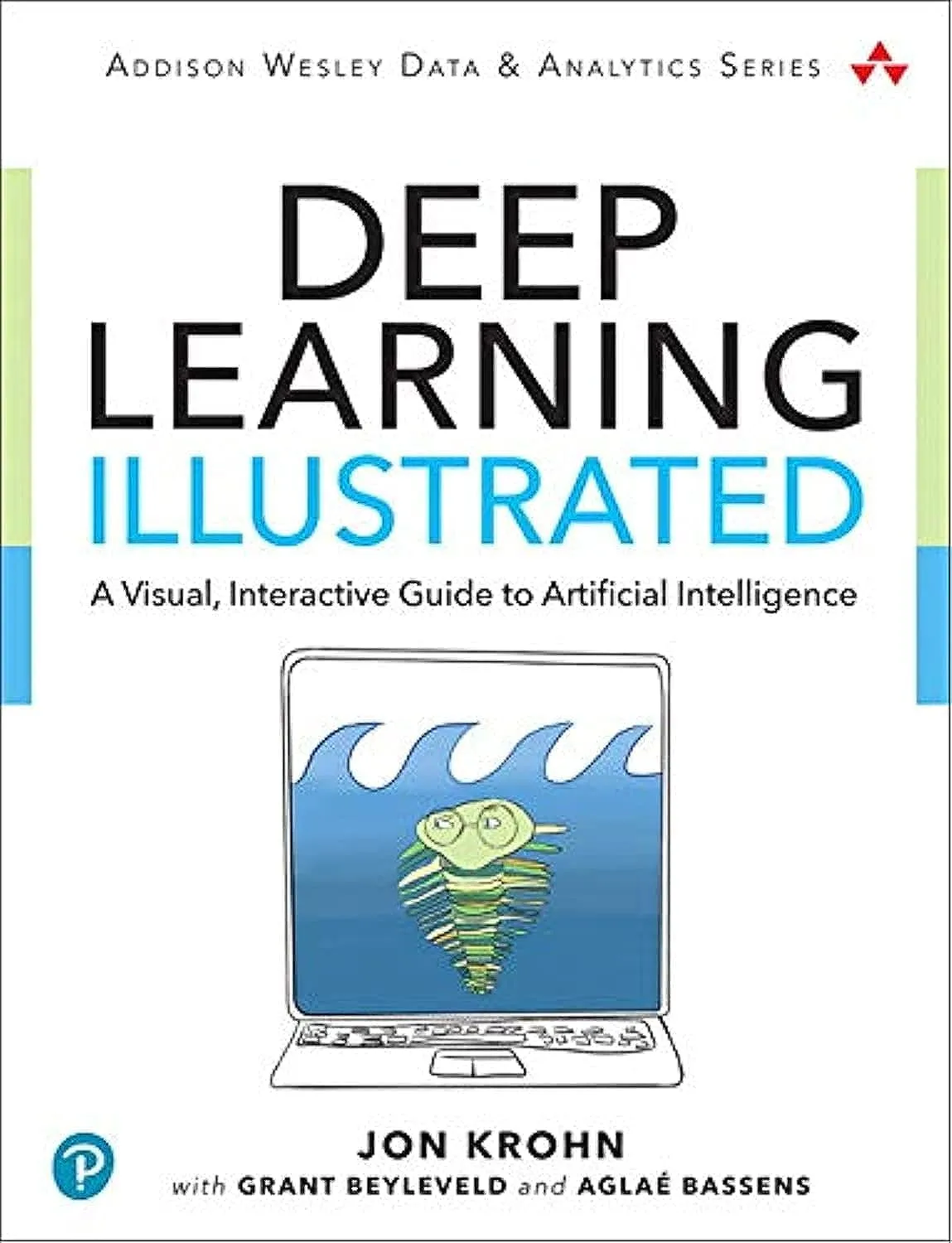
| Key Information | |||
| Authors: Jon Krohn, Grant Beyleveld, Aglaé Bassens | Publisher: Addison-Wesley Professional | ||
| Pages: 416 | Edition: First | ||
| Publish Date: September 2019 | Level: Beginner | ||
| Rating: 4.5/5 | Formats: Paperback, Kindle | ||
| Who is it for? Visual learners | |||
Why we chose this book
When it comes to visual explanations and interactive code examples, this is arguably the best book for Deep Learning, as the authors use diagrams and illustrations to demystify complex concepts in Deep Learning.
Expect to learn about neural networks, convolutional networks, recurrent networks, generative models, and more. Our findings show that the book also explores the application of Deep Learning in areas like computer vision, natural language processing, and reinforcement learning.
Overall, we think this is ideal for beginners and also advanced learners who are looking for a more visual and interactive approach to understanding Deep Learning concepts.
Features
- Code examples in both TensorFlow and PyTorch
- Includes lots of images and illustrations
- Suitable for all levels
10. Neural Networks and Deep Learning
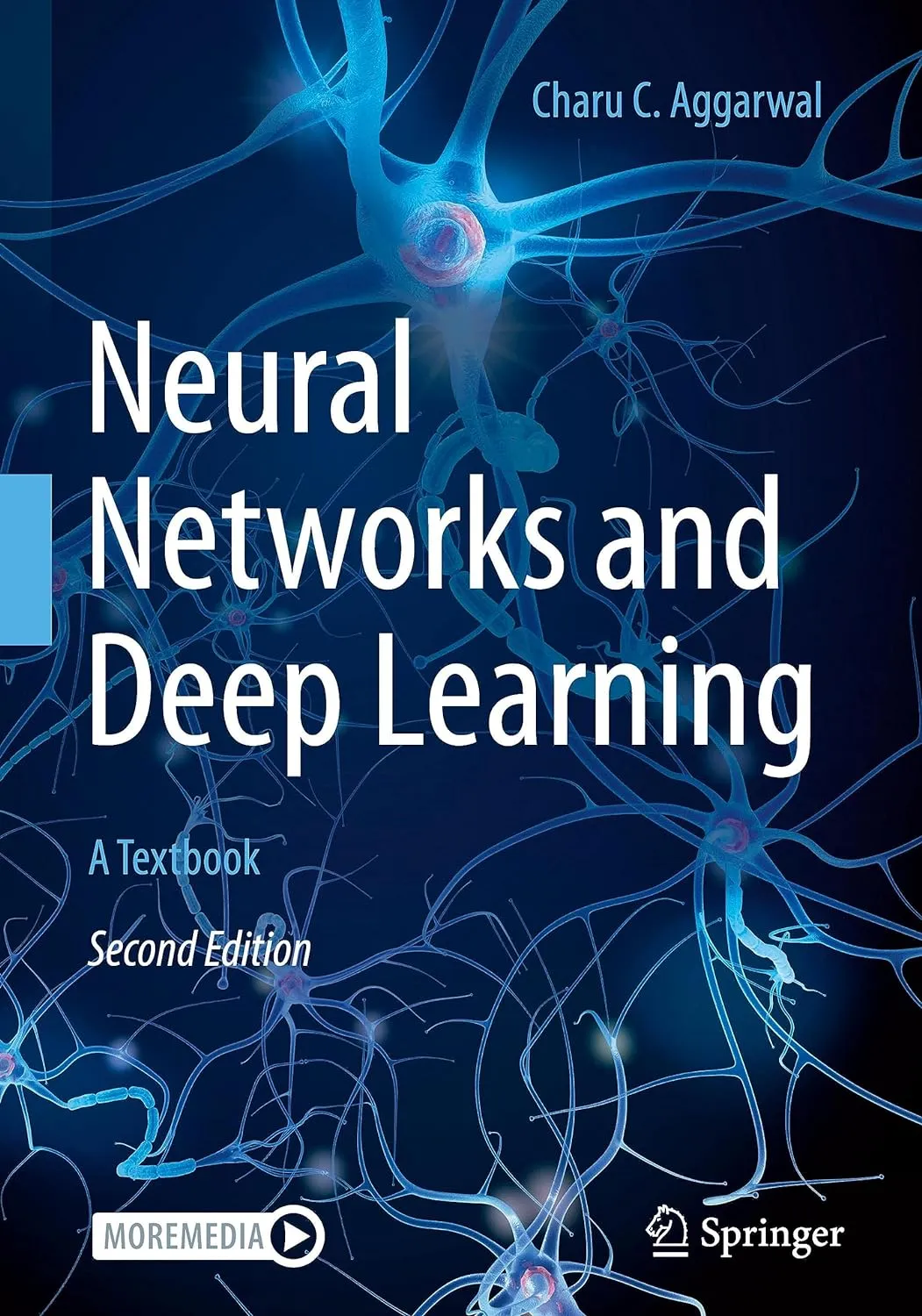
| Key Information | |||
| Authors: Charu C. Aggarwal | Publisher: Springer | ||
| Pages: 520 | Edition: First | ||
| Publish Date: July 2023 | Level: Intermediate | ||
| Rating: 4.5/5.0 for 1st edition | Formats: Paperback, Hardcover, eTextbook | ||
| Who is it for? Researchers, Advanced Students, etc. | |||
Why we chose this book
Freshly released in a new edition for 2023, our research showed that the author, Charu Aggarwal, is a Distinguished Research Staff Member (DRSM) of the IBM Research Center in New York. Charu draws on his experience to explain how various neural networks work at a conceptual level.
The content of this Deep Learning textbook is divided into three main sections, namely, basics of neural networks, fundamentals of neural networks, and advanced topics in neural networks.
The first section covers the backpropagation algorithm and explores the connections between neural networks and traditional machine learning. The next section presents lessons on radial-basis function (RBF) networks and restricted Boltzmann machines.
The final section dives into advanced topics like deep reinforcement learning, generative adversarial networks(GANs), attention mechanisms, and transformer networks.
Features
- Brand new edition of the popular 1st edition
- Written for researchers and graduate students
- Extensive coverage of advanced topics
- #1 new release in Speech & Audio Processing
11. Grokking Deep Learning
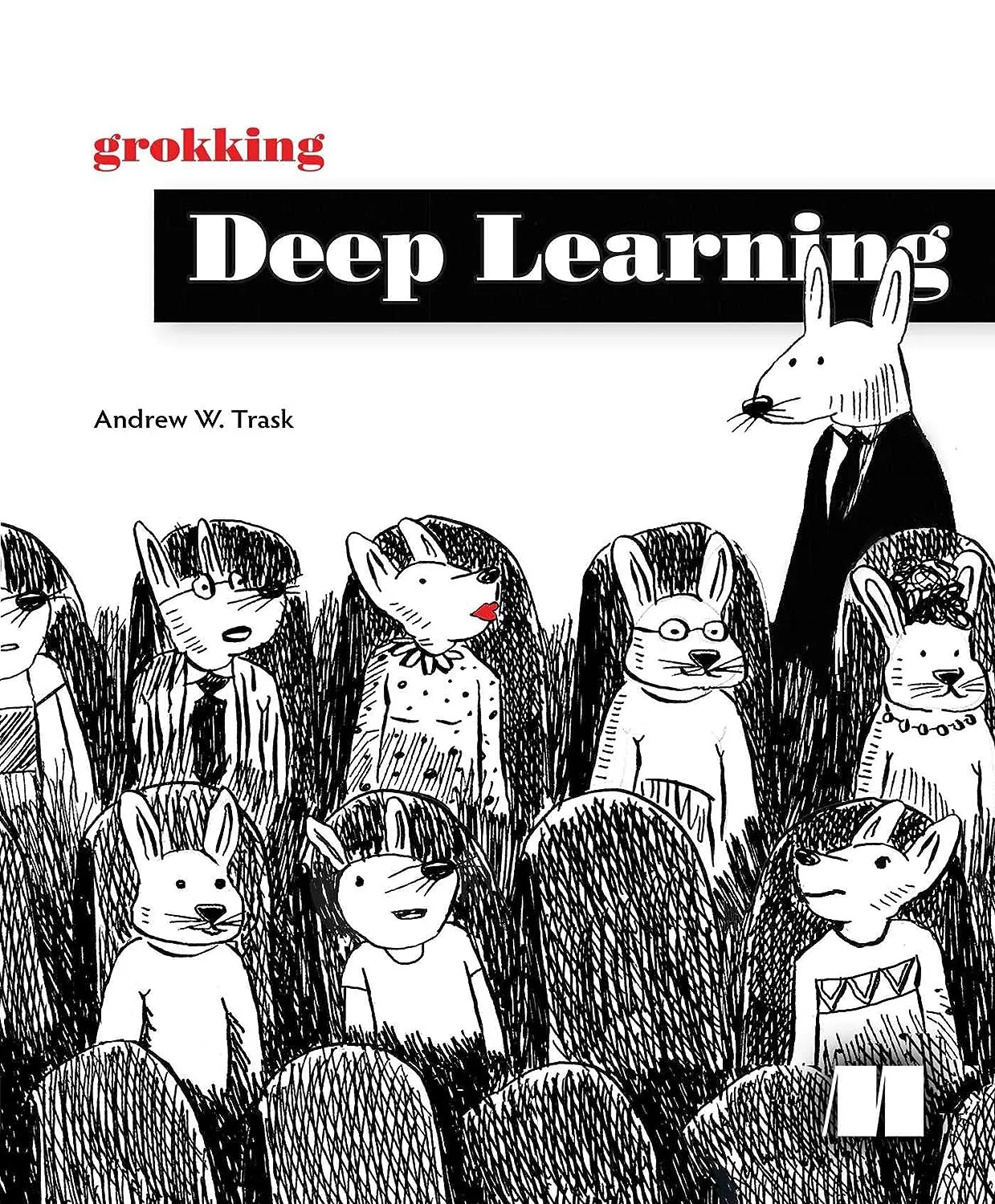
| Key Information | |||
| Author: Andrew Trask | Publisher: Manning | ||
| Pages: 336 | Edition: First | ||
| Publish Date: January 2019 | Level: Intermediate | ||
| Rating: 4.5/5 | Formats: Paperback, eTextbook | ||
| Who is it for? Readers with intermediate programming skills | |||
Why we chose this book
Our findings show that one of this book’s notable features is the author’s emphasis on building a strong foundation in the core concepts of Deep Learning.
To teach this, he uses analogies and real-life examples to explain concepts like gradient descent, backpropagation, and activation functions. This book also covers topics like regularization and batching, convolutional neural networks (CNNs), and long short-term memory (LSTM),
This book is a great choice for beginners with little or no background in Deep Learning. However, our findings revealed that to get the most out of this book, you need to have at least some high school-level math and intermediate programming skills.
Toward the end of the book, the author also provides a guide on the next steps readers can take to level up their skills in Deep Learning.
Features
- Clear explanations and real-life examples
- Hands-on approach to learning neural networks
- Includes an introduction to NumPy
- Assume readers have intermediate programming skills
12. Deep Learning with PyTorch

| Key Information | |||
| Authors: Eli Stevens, Luca Antiga, Thomas Viehmann | Publisher: Manning | ||
| Pages: 520 | Edition: First | ||
| Publish Date: August 2020 | Level: Intermediate | ||
| Rating: 4.4/5 | Formats: Paperback, Kindle, Audible Audiobook | ||
| Who is it for? Python programmers | |||
Why we chose this book
This is a comprehensive guide that focuses on teaching Deep Learning concepts and techniques using the PyTorch framework.
Our findings show that you will learn how to build and train neural networks, in addition to data preparation, loss functions, optimization algorithms, and model evaluation. There is also a section dedicated to deployment and production consideration
The authors adopt a hands-on approach to teaching in this book. Throughout the course of the book, readers will be working on a deep-learning project designed to aid in the early detection of lung cancer.
The authors also provide insights into some practical challenges you will face in real-world Deep Learning projects. And offers guidance on how to address them effectively. And given that the authors are also core contributors to the PyTorch framework, their advice is worth taking!
Features
- Authored by PyTorch core contributors
- Build a cancer detection model
- Ideal for Python programmers
- Hands-on approach to learning
13. Deep Learning
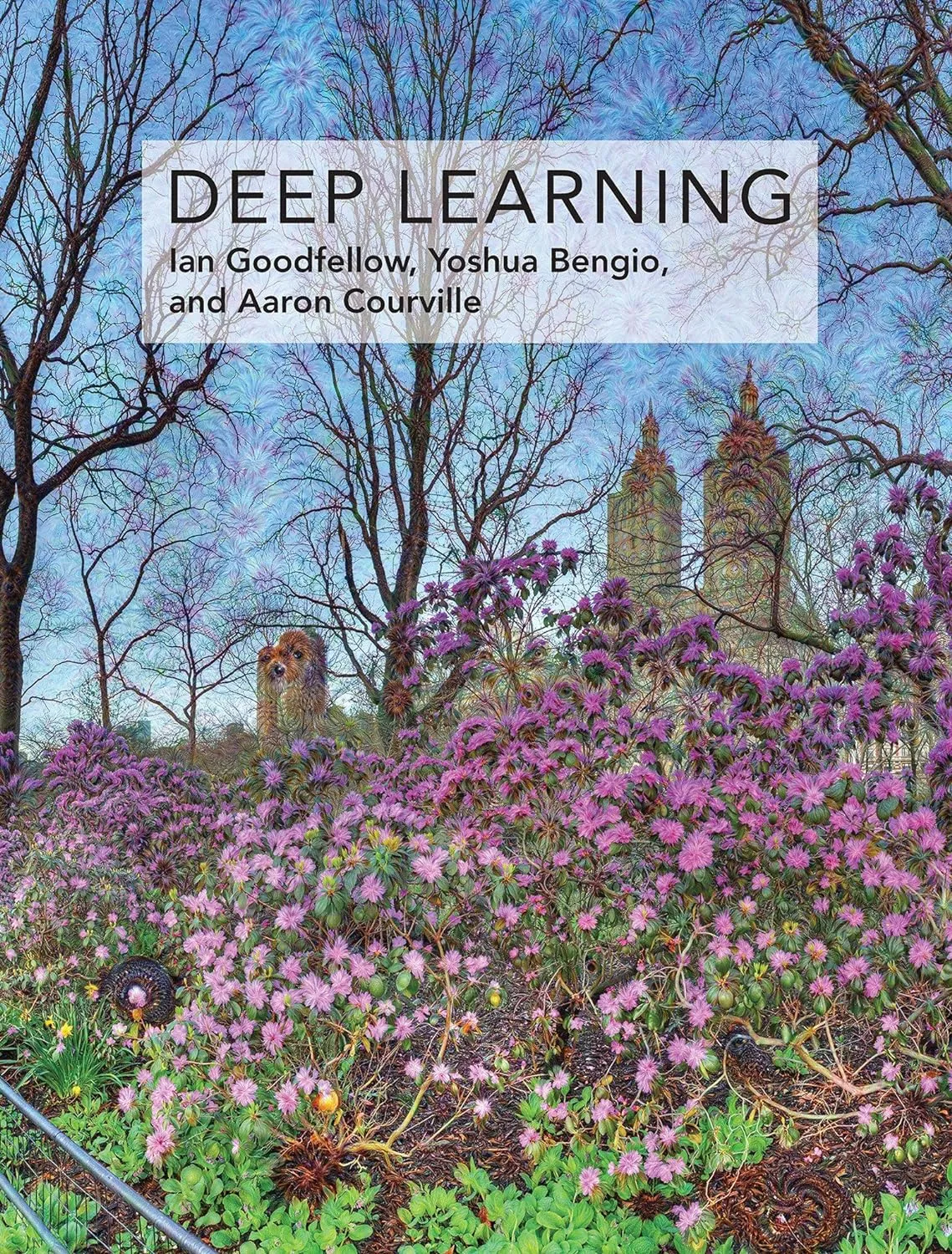
| Key Information | |||
| Authors: Ian Goodfellow, Yoshua Bengio, Aaron Courville | Publisher: The MIT Press | ||
| Pages: 800 | Edition: Illustrated Edition | ||
| Publish Date: November 2016 | Level: Beginner | ||
| Rating: 4.3/5 | Formats: Paperback, Hardcover, Kindle | ||
| Who is it for? Software Engineers, Undergraduate or Graduate Students, Researchers, etc. | |||
Why we chose this book
This 800-page book provides a comprehensive and in-depth exploration of the theory and algorithms behind Deep Learning. It begins with an introduction and overview of the historical trends in Deep Learning.
The authors then delve into applied math and machine learning basics, including linear algebra, probability, information theory, supervised and unsupervised learning algorithms, bayesian statistics, gradient descent, and more.
And if that’s not enough for you, other topics in this book include deep feedforward networks, convolutional networks, recurrent neural networks, autoencoders, representation learning, and more.
In addition to the theoretical aspects, we also found that this book discusses practical considerations like model training, hyperparameter tuning, and tips for building effective Deep Learning systems. The authors do well to include many examples and code snippets to illustrate the concepts discussed.
Our findings also revealed that one of the authors, Ian Goodfellow, works as a research scientist at OpenAI. If that sounds familiar to you, it’s because they created ChatGPT!
Features
- Comprehensive coverage of Deep Learning
- In-depth coverage of the math behind DL
- Authored by OpenAI research scientist
- Include many examples and exercises
14. Deep Learning from Scratch
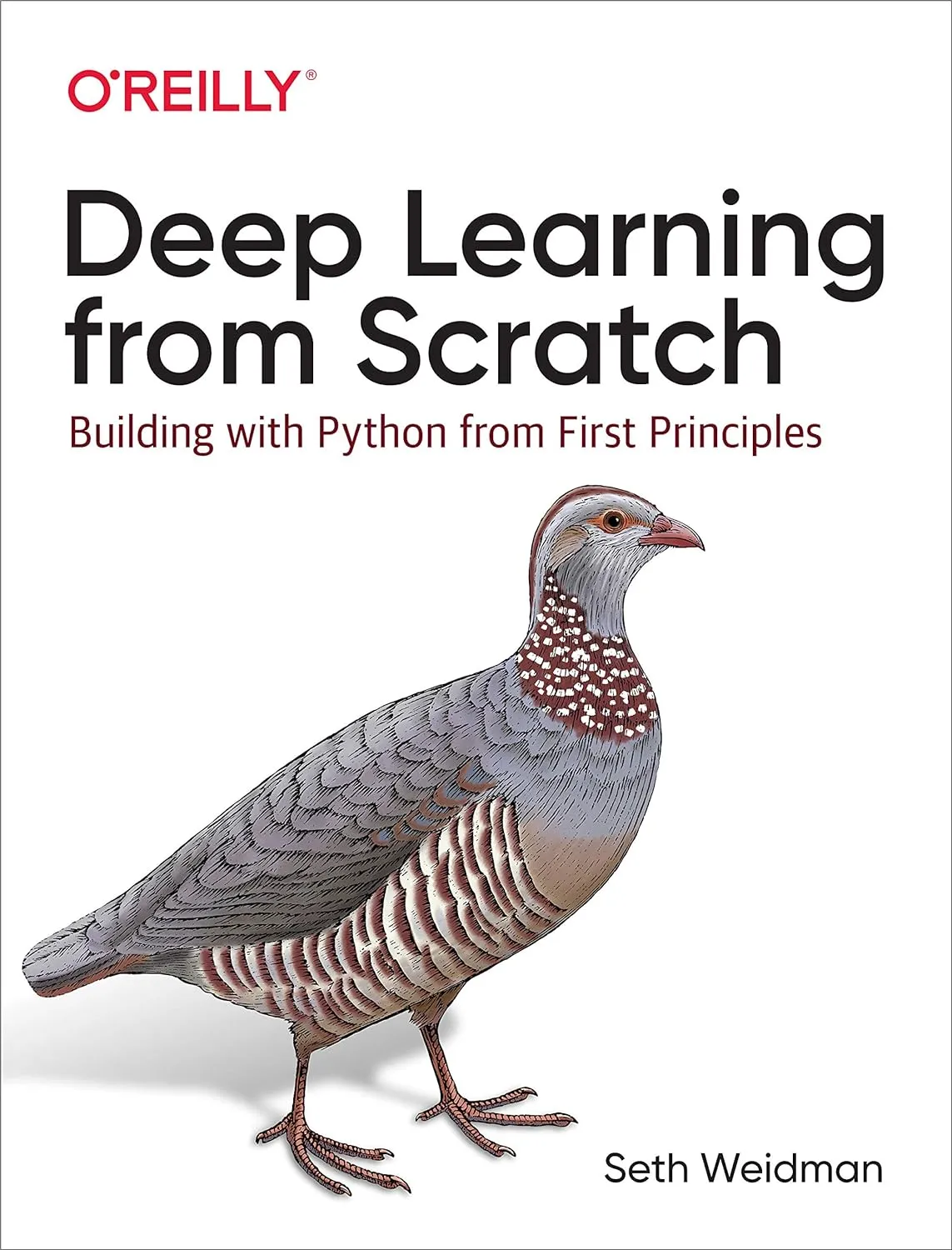
| Key Information | |||
| Author: Seth Weidman | Publisher: O’Reilly Media | ||
| Pages: 250 | Edition: First | ||
| Publish Date: October 2019 | Level: Beginner | ||
| Rating: 4.3/5 | Formats: Paperback, Kindle | ||
| Who is it for? Beginners and Intermediate Learners | |||
Why we chose this book
This is a practical guide that aims to teach Deep Learning concepts and techniques from the ground up without relying on any Deep Learning libraries or frameworks.
Based on our observations, the author guides readers through various topics like neural networks, backpropagation, optimization algorithms, regularization, and convolutional neural preprocessing.
There are also practical lessons on data preprocessing, model evaluation, and hyperparameter tuning. Overall, this book focuses on building a strong understanding of the fundamental concepts behind Deep Learning by coding everything from scratch.
By implementing Deep Learning algorithms from the ground up, readers gain a deeper understanding of the inner workings of neural networks and the mathematical principles behind them.
It’s a valuable resource for beginners looking to learn the fundamentals and intermediate learners seeking to strengthen their foundational knowledge.
Features
- Clear explanations of concepts
- Includes many examples and exercises
- Suitable for both beginners and intermediate readers
#datascience #machinelearning #deeplearning #ai #artificialintelligence #python #tensorflow
